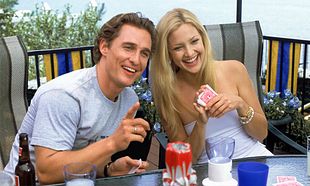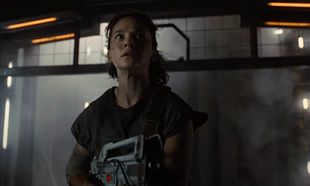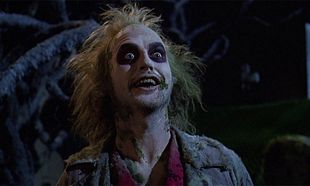As the remake of Tobe Hooper's spectacular horror classic Poltergeist edges its way towards our screens on May 22nd, we thought we'd go back - WAY BACK - to the actual true-life story that inspired both the original and the remake.
Before we get started, check out the genuinely INSANE trailer.
In 1958, the Hermann family in Seaford, New York were catapulted right into the public spotlight following an article in Life Magazine.
Picture the scene, if you will. An all-American family are returning home from school. Twelve-year old James and thirteen-year old Lucille Hermann entered their kitchen and discovered, well, something you don't see every day.
They would later refer to the ghost, or poltergeist if you will, as Popper. Every bottle in the kitchen - milk, ketchup, whatever - popped their caps and began to spray their contents in the air. Then, the bottles began to rise and "dance" and levitate in the air. Per their report, the family would discover bleach bottles with screw-tops opened, a bottle of holy water opened and basically every bottle in the house opened.
At first, the parents did what any of us would do - they suspected the kids were behind it and even thought the son, James, was behind it. Apparently, the young lad was a science whizz and believed that he rigged them to pop with humidity.
There was more. A phonograph threw itself the air, glass bottles smashed instantly without any touching and in one instance, a holy water bottle - another one in the house as the Hermanns were devout Catholics - was found with its contents empty and the bottle described as "warm to the touch" by one of the family. Soon enough, the freak occurrences lead to police being called to investigate. Det. Jospeh Tozzi was sent to investigate the house and, despite his best efforts, found no evidence whatsoever of foul play.
Indeed, Tozzi camped out for several nights in the Hermann's home to see if there was anything to be found. One particularly disturbing instance gave them real fright.
On February 24th, 1958, a heavy bureau desk threw itself forward onto its face in the presence of one of the children. Tozzi, who was in the house at the time, was certain no-one could have done it - or indeed any of the children. The detective's investigation took in every possible scientific conclusion - humidity, geological surveys, downdraft from overhead jets. At one point, it was surmised that a freak magnetic field was the cause of the incidents. Not so.
For whatever reason, almost all of the events occurred whenever a child was near or if there was a bottle of holy water in the vicinity. Priests were called, but found or did nothing. Psychologists too were called to speak to the children, but again, no evidence of any wrongdoing or reasonable explanation.
Little by little, the events began to subside when public attention became fixated on the Hermanns and their so-called poltergeist.
In a recent interview, the daughter, Lucille Hermann, described the events as "my own nightmare".
In fact, Lucille says she hasn't even seen the original Poltergeist, nor have her adult children. "Explaining it is very difficult," Lucille says.
That's an understatement.
Screenwriters Mark Victor and Michael Grais investigated the story when Spielberg, who originally wanted to direct the movie, discussed the case with them and the Life Magazine article.
Some aspects of Poltergeist, however, weren't necessarily taken from the Hermann's case. The porcelain clown, for example, was from Spielberg's own childhood - as was the "tree" outside the house.
Whether the Hermanns were telling the truth or not is, at this stage, irrelevant. What it inspired is more important. Poltergeist has gone down as one of horror's finest entries and become a modern classic.
Unlike 'Popper' the Poltergeist, that's something that can be proven.
Poltergeist is in cinemas on May 22nd.












































































